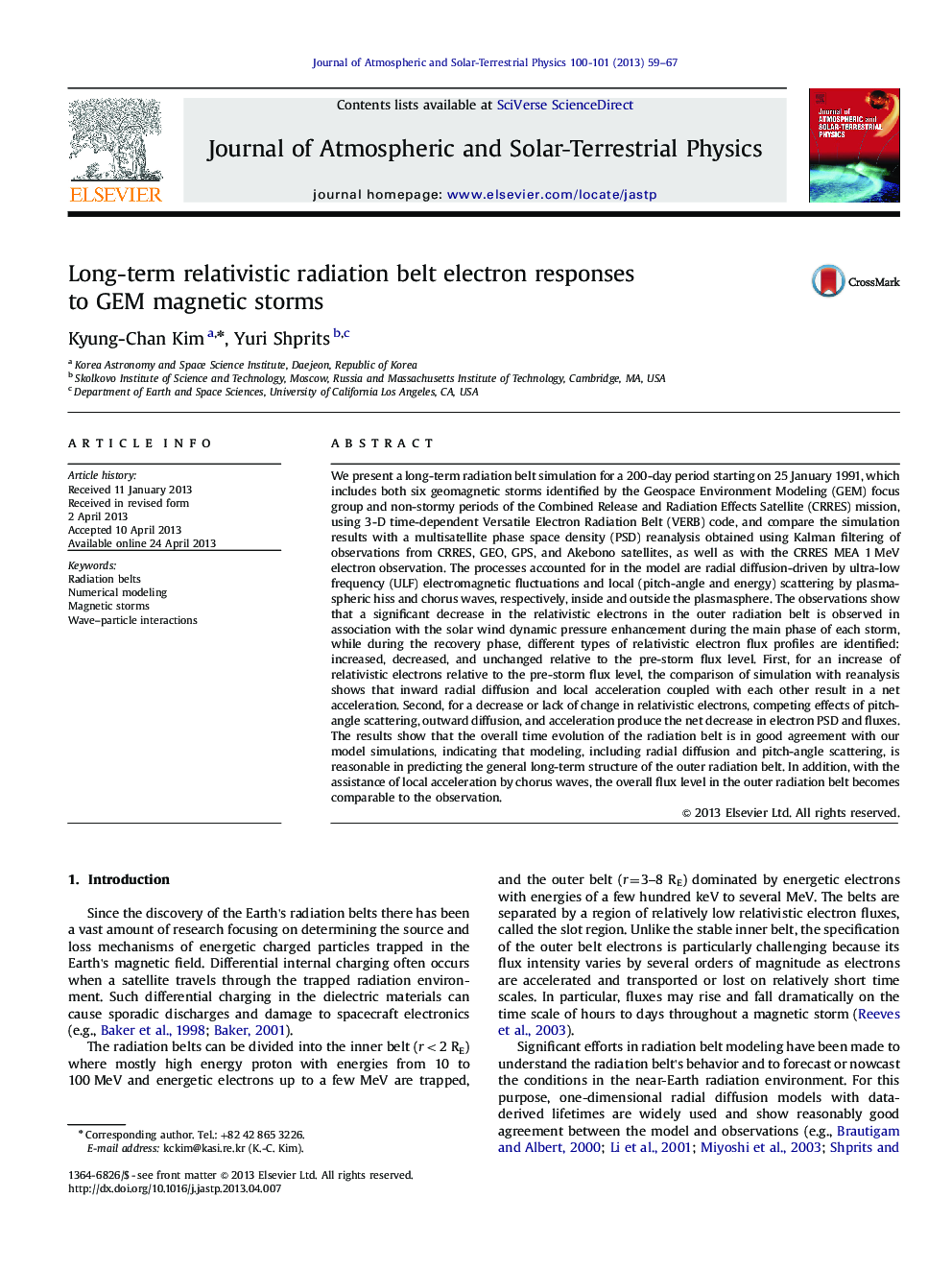| کد مقاله | کد نشریه | سال انتشار | مقاله انگلیسی | نسخه تمام متن |
|---|---|---|---|---|
| 1776691 | 1523636 | 2013 | 9 صفحه PDF | دانلود رایگان |
عنوان انگلیسی مقاله ISI
Long-term relativistic radiation belt electron responses to GEM magnetic storms
دانلود مقاله + سفارش ترجمه
دانلود مقاله ISI انگلیسی
رایگان برای ایرانیان
کلمات کلیدی
موضوعات مرتبط
مهندسی و علوم پایه
علوم زمین و سیارات
فیزیک زمین (ژئو فیزیک)
پیش نمایش صفحه اول مقاله

چکیده انگلیسی
We present a long-term radiation belt simulation for a 200-day period starting on 25 January 1991, which includes both six geomagnetic storms identified by the Geospace Environment Modeling (GEM) focus group and non-stormy periods of the Combined Release and Radiation Effects Satellite (CRRES) mission, using 3-D time-dependent Versatile Electron Radiation Belt (VERB) code, and compare the simulation results with a multisatellite phase space density (PSD) reanalysis obtained using Kalman filtering of observations from CRRES, GEO, GPS, and Akebono satellites, as well as with the CRRES MEA 1Â MeV electron observation. The processes accounted for in the model are radial diffusion-driven by ultra-low frequency (ULF) electromagnetic fluctuations and local (pitch-angle and energy) scattering by plasmaspheric hiss and chorus waves, respectively, inside and outside the plasmasphere. The observations show that a significant decrease in the relativistic electrons in the outer radiation belt is observed in association with the solar wind dynamic pressure enhancement during the main phase of each storm, while during the recovery phase, different types of relativistic electron flux profiles are identified: increased, decreased, and unchanged relative to the pre-storm flux level. First, for an increase of relativistic electrons relative to the pre-storm flux level, the comparison of simulation with reanalysis shows that inward radial diffusion and local acceleration coupled with each other result in a net acceleration. Second, for a decrease or lack of change in relativistic electrons, competing effects of pitch-angle scattering, outward diffusion, and acceleration produce the net decrease in electron PSD and fluxes. The results show that the overall time evolution of the radiation belt is in good agreement with our model simulations, indicating that modeling, including radial diffusion and pitch-angle scattering, is reasonable in predicting the general long-term structure of the outer radiation belt. In addition, with the assistance of local acceleration by chorus waves, the overall flux level in the outer radiation belt becomes comparable to the observation.
ناشر
Database: Elsevier - ScienceDirect (ساینس دایرکت)
Journal: Journal of Atmospheric and Solar-Terrestrial Physics - Volumes 100â101, August 2013, Pages 59-67
Journal: Journal of Atmospheric and Solar-Terrestrial Physics - Volumes 100â101, August 2013, Pages 59-67
نویسندگان
Kyung-Chan Kim, Yuri Shprits,